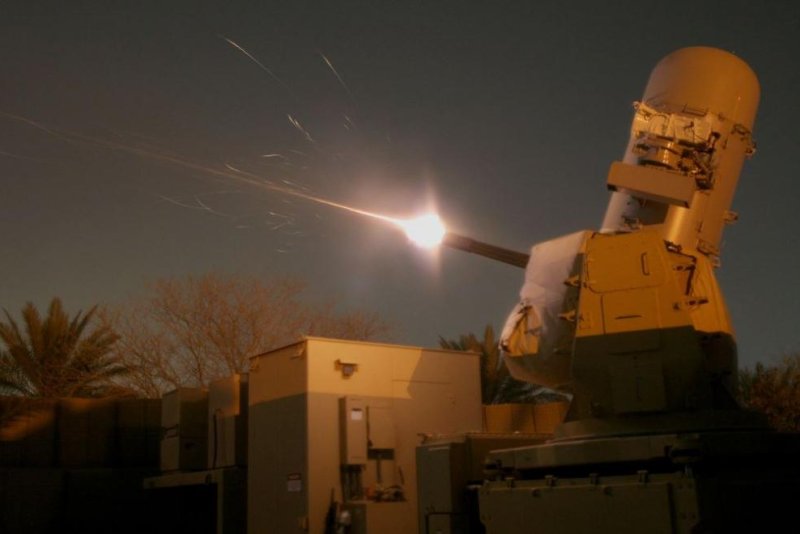Defense ministers at a NATO conference on Friday signed letters of intent to develop shared C-RAM systems, pictured, and Ground-Based Air Defense systems. Photo courtesy of U.S. Army
Oct. 23 (UPI) -- Two initiatives for air combat defenses emerged Friday from a virtual conference of defense ministers of NATO countries, the military bloc announced.
Ministers from Belgium, Britain, Denmark, Germany, Hungary, Italy, Latvia, the Netherlands, Slovenia and Spain signed a letter of intent to implement a systematic and modular Ground-Based Air Defense, or GBAD, to defend against a range of air and missile threats.
The system will include very short range missiles, including Stinger, Mistral and anti-aircraft artillery, and short range and medium range missiles, including the HAWK and Network Centric Short to Medium Range Ground Based Air Defense System.
The pact will allow each country to create threat-tailored GBAD force packages that integrate into their own systems, as well as those of NATO allies participating in the program.
"Such an approach will considerably strengthen the participating allies' ability to seamlessly integrate individual national modules into multinational GBAD force packages," Mircea Geoana, NATO deputy secretary-general, said in a statement.
Additionally, defense ministers from Britain, Germany, Greece and Hungary agreed to the High Visibility Project to address growing challenges in the sphere of Rapidly Deployable Mobile Counter Rockets, Artillery, and Mortar, known as C-RAM.
The land- and air-based system offers the ability to rapidly-deploy Manta and similar systems to counter enduring indirect fire threats.
The C-RAM project offers lower cost and better interoperability among the nations, a NATO statement on Friday said.
"This C-RAM initiative will significantly increase capacities to conduct high-intensity operations, while enhancing the protection of personnel, facilities and equipment from rocket and mortar artillery attacks, and conventional air threats," commented Geoana.
The agreements were announced during the two-day virtual conference at which NATO Secretary-General Jens Stoltenberg noted that NATO intends to strengthen its hand in land, sea, air, cyber and space defense domains.
Stoltenberg this week also formally announced the establishment of a new NATO Space Center at Allied Air Command in Ramstein, Germany.
The Space Center, he said, has been created to "coordinate allied space activities, support NATO missions and operations from space, including with communications and satellite imagery, and protect allied space systems by sharing information about potential threats."















